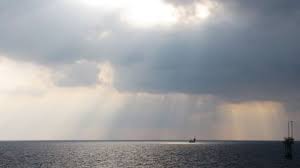Iranian parliament recommends Strait of Hormuz closure: What may be in store for energy markets, India’s oil imports

The Strait of Hormuz—often called the world’s most important oil chokepoint—is once again at the center of geopolitical tension. The Iranian Parliament’s recent recommendation to close the strait in retaliation to Western military activity has sparked serious concern across energy markets, particularly for oil-importing nations like India. Although the vote was non-binding, its implications are far-reaching, touching everything from global crude prices to India’s inflation outlook.
What Happened?
On June 22, Iran’s Parliament passed a resolution urging the government to consider closing the Strait of Hormuz in response to U.S. and Israeli strikes on its nuclear facilities. While the ultimate decision lies with Iran’s Supreme National Security Council and Supreme Leader Ayatollah Khamenei, the symbolic move serves as a warning shot to the West—and to oil markets globally.
The Strait of Hormuz, a narrow 21-mile-wide passage, connects the Persian Gulf with the Gulf of Oman and the Arabian Sea. Nearly 20% of the world’s oil supply—about 18 million barrels per day—passes through this strategic corridor. That includes a significant portion of India’s crude oil imports.
Why Energy Markets Are Reacting
Even a threat to block the Strait of Hormuz creates ripples across global energy markets. Crude oil prices surged shortly after the news, with Brent crude climbing to over $80 per barrel, its highest in five months. Energy analysts warn that if Iran actually attempts to restrict passage through the Strait, prices could spike to $100–$110 per barrel, if not higher.
Investors and policymakers are concerned about several risks:
- Supply disruption: Even a temporary halt in shipments could squeeze supply, especially for Asian countries heavily dependent on Gulf oil.
- Insurance costs: Ships transiting the area are now paying higher war-risk premiums.
- Shipping delays: Increased naval activity could slow vessel movement, delaying oil deliveries and raising costs.
These risks aren’t just theoretical. During similar tensions in 2019 and 2020, tankers were attacked in the Strait, prompting a dramatic rise in freight and insurance costs. This time, the threat comes amid already tight supplies due to OPEC+ production cuts and rising summer demand.
The India Angle: Why It Matters Deeply
India, the world’s third-largest oil importer, relies on the Persian Gulf for a major chunk of its energy needs. Over 40% of India’s crude imports pass through the Strait of Hormuz, including shipments from Iraq, Saudi Arabia, the UAE, and Kuwait.
Key Implications for India:
- Rising Fuel Prices at Home
Higher global oil prices mean increased costs for Indian refiners, which can trickle down to petrol, diesel, and LPG prices for consumers. With general elections completed and a new government in place, managing inflation becomes critical. - Widening Trade Deficit
India’s import bill could rise significantly if Brent crude stays above $85 per barrel for an extended period. A higher trade deficit puts pressure on the rupee and may even impact interest rate decisions by the Reserve Bank of India (RBI). - Inflation Woes
Expensive crude pushes up the price of transport, logistics, and manufactured goods. The RBI has warned in the past that external oil shocks are a major threat to India’s inflation targets. - Strategic Reserve Usage
India maintains strategic petroleum reserves (SPRs) that can cover about 74 days of net imports. If the situation worsens, the government may tap into these reserves to soften the domestic blow.
India’s Mitigation Strategy: Diversification is Key
India has been proactively diversifying its oil sources over the past two years. Russian oil, especially since the Ukraine war, has emerged as a key supply partner. In fact, Russia now accounts for more than 35% of India’s crude imports, transported largely through non-Hormuz routes.
Other steps include:
- Increased LNG sourcing from the U.S., Australia, and Qatar
- Investments in renewable energy to reduce long-term dependence on fossil fuels
- Strategic partnerships with Latin American and African producers
While these efforts provide a cushion, India cannot fully decouple from the Gulf. The infrastructure, contracts, and shipping lanes are too deeply embedded in Hormuz-linked supply chains.
Global Outlook: A Temporary Shock or a Long-Term Shift?
Most analysts believe Iran is unlikely to fully close the Strait. Doing so would invite a strong military response from the U.S. and its allies, and even harm Iran’s own economy. After all, Iran itself exports most of its crude through Hormuz.
However, the geopolitical posturing alone is enough to inject volatility into markets. Traders and oil companies are already pricing in the “risk premium” that accompanies any Gulf instability.
If the tension escalates:
- Expect short-term spikes in oil and gas prices
- Countries like India and China will likely intensify alternate supply arrangements
- Strategic reserves might be used more aggressively by importing nations
Conclusion: India Must Stay Alert, Act Smart
The Iranian Parliament’s vote to recommend closing the Strait of Hormuz has reignited old fears about oil chokepoints becoming geopolitical pawns. For India, the message is clear: while diversification efforts are bearing fruit, reliance on the Gulf remains substantial.
To safeguard its economy, India must continue expanding its energy basket, strengthen its strategic reserves, and build financial tools—such as hedging and import insurance—to weather such shocks. Global oil markets may be entering another turbulent phase, and countries like India need to prepare for both immediate price shocks and long-term strategic adjustments.






